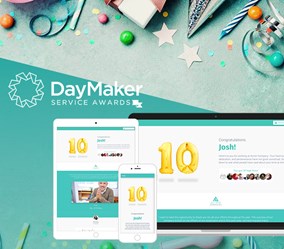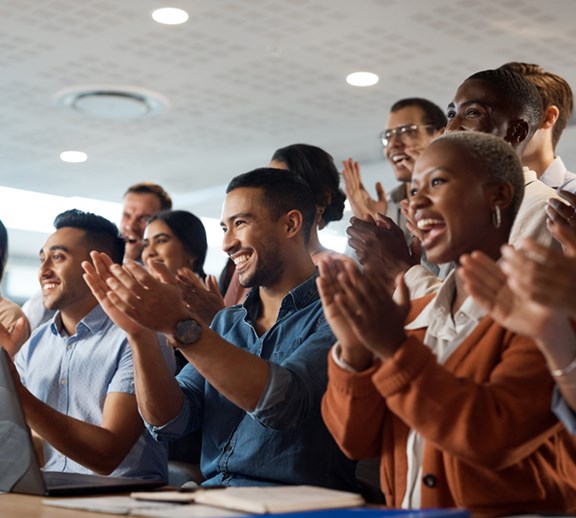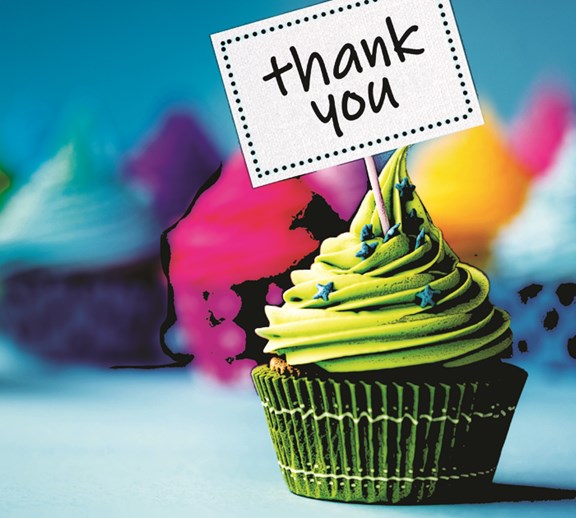Q&A: BI WORLDWIDE Canada President Talks Employee Recognition Programs
Written by: Andrew Clark
(View Author Bio)
Andrew Clark, President of BI WORLDWIDE Canada presents the answers to some of the questions frequently asked about employee recognition programs.
Scroll Down
How important is employee recognition?
Recognition is very important because it creates that extra level of engagement and impacts discretionary effort and intent to stay. When we’re appreciated, it feels good. It’s something called the Dopamine effect. There is a direct correlation between turnover and recognition. We know that turnover is 17% less if employees receive recognition. The frequency also has an impact.
What goes into making a good recognition program?
Good design starts a well thought out strategy. It’s about understanding what behaviours you’re trying to reinforce and those that you’re trying to change. The overall design should include:
- Communication
- Education
- Motivation
- Regular updates
- Analysis against key metrics
What types of employee incentives should be offered?
The key to incentives and rewards is efficacy – the degree to which a reward can influence behaviour. Cash and cash equivalents are very low on the rewards efficacy scale. Experiences and travel are the highest motivators. Overall choice is critical because rewards are perceived differently by the many generations in the workforce today.
How should earning systems work?
Earnings should be related to income, the complexity of the task, and the return on investment (ROI). Measurable results are key.
How should the overall design be decided upon?
A good loyalty program is designed to impact all stages of the employee or consumer lifecycle from onboarding to advocacy. One of the challenges in consumer loyalty is there is loyalty fatigue in the market. How many loyalty cards do we all have? How many of them drive behaviour?
What should the design process look like?
Good programs leverage applied behavioural economics with an engagement strategy to communicate, educate, motivate, and update the audience. Program design should elicit behaviours and a reward strategy using hedonic rewards to evoke emotion.
What are the benefits of a good recognition program?
Through our research, we know that those who receive multiple types of recognition are happier, more engaged, committed, and intensely performing. This translates into lower turnover, higher customer satisfaction, and ultimately reduces the cost of onboarding.
What are some of the unique advantages or disadvantages of recognition programs over other forms of boosting employee morale or productivity?
Meaningful recognition has no disadvantages. In fact, leveraging a recognition solution can create consistency in application and approach and leveraging analytics can give line of sight to key areas for improvement and provide insights on behaviour throughout an organization.
What are things that people tend to overlook when it comes to recognition programs and their effects?
Take the time to do a thorough analysis of the current situation, audit current programs, and build a strategy involving key players; including middle management. Their buy-in and participation are essential.
Should more companies strive to provide recognition programs?
Defining a company’s Employee Value Proposition (EVP) to attract, inspire, and retain employees is essential. More and more companies realize this.
Should the employee recognition program exist in a vacuum or is there a larger context of work culture and other employee benefits that should be offered by the organization? What should that larger context look like and how should the program fit into it?
Recognition and rewards should be a component of the compensation model to influence discretionary effort and behaviour.
Do you have any interesting statistics around the benefits or effects of employee loyalty programs?
Click here to view our Impact of Recognition on Turnover stats package.
Do you think the current economic or workplace background or employee engagement rate has any impact on how recognition programs should be implemented?
Definitely. Depending on the current situation and analysis, the strategy and tactics would be much different. In our global employee engagement research, we determined the 12 New Rules of Engagement. Each situation is entirely different and will be at various stages in the journey.
How have loyalty programs changed over the years?
We have moved to multiple touchpoints driven by behavioural science, technology, and a multi-generational workforce – who all need to be approached in a way that is meaningful to them.
Last question: Do you think that recognition programs or incentives will continue to have a place in the workplace? Why? How do you imagine they will change in the future?
Utilizing technology, artificial intelligence (AI), virtual reality (VR), native apps, and creative design grounded in the science of applied behavioural economics.
The best way to get started is to get in touch




















